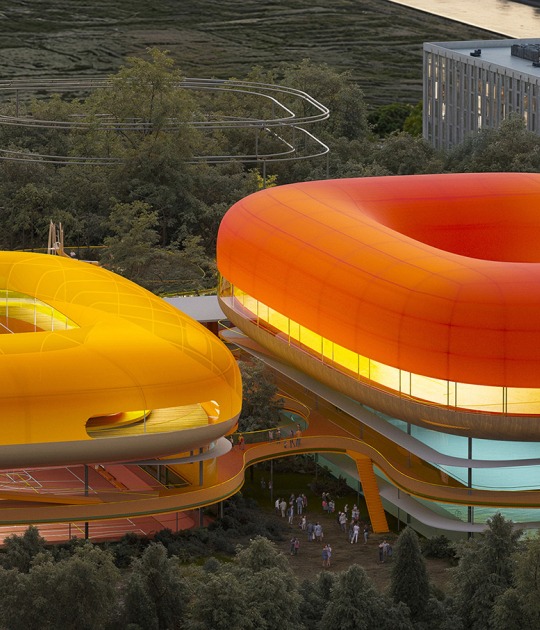The designs will revitalise and incorporate the surviving remains of the walls, moats and gates of the historic city, seen throughout the city today, including through a pedestrianising scheme and linear park that allows visitors to experience the history of the ancient city. The museum project also recognises the huge importance of the archaeological remains still preserved below the ground.
Project description by David Adjaye
Applying our research into Benin’s extraordinary ruins, the city’s orthogonal walls and its courtyard networks, the museum design reconstructs the inhabitation of these forms as pavilions that enable the reconceptualization of artefacts. Decoupling from the Western museum model, the EMOWAA will perform as a retouching tool - a place for recalling lost collective memories of the past to instil an understanding of the magnitude and importance of these civilizations and cultures.
We are proposing an undoing of the objectification that has happened in the West through full reconstruction. The new museum design reconstructs the inhabitation of these forms as pavilions that enable the recontextualization of artefacts. Decoupling from the Western museum model, this museum will perform as a reteaching tool — a place to instill an understanding of the magnitude and importance of these civilizations and cultures.
Adjacent to the Oba’s Palace, the new EMOWAA draws inspiration from its historical architectural typologies and establishes its own courtyard in the form of a public garden, exhibiting a variety of indigenous flora and a canopy that offers shade – a welcoming green environment suitable for gatherings, ceremonies and events. The galleries float above the gardens and are articulated by a series of elevated volumes – an inversion of the courtyard typology – within each of which sit pavilions which take their form from fragments of reconstructed historic compounds. These fragments allow the objects themselves to be arranged in their pre-colonial context and offer visitors the opportunity to better understand the true significance of these artefacts within the traditions, political economy and rituals enshrined within the culture of Benin City.
A new dedicated space, EMOWAA will contain the rich, regal and sacred objects of Benin’s past, in a way that allows visitors not just the possibility of “looking in” but “looking out” into the visual landscape of imagining the once historic borders of a restored ancient kingdom.

































